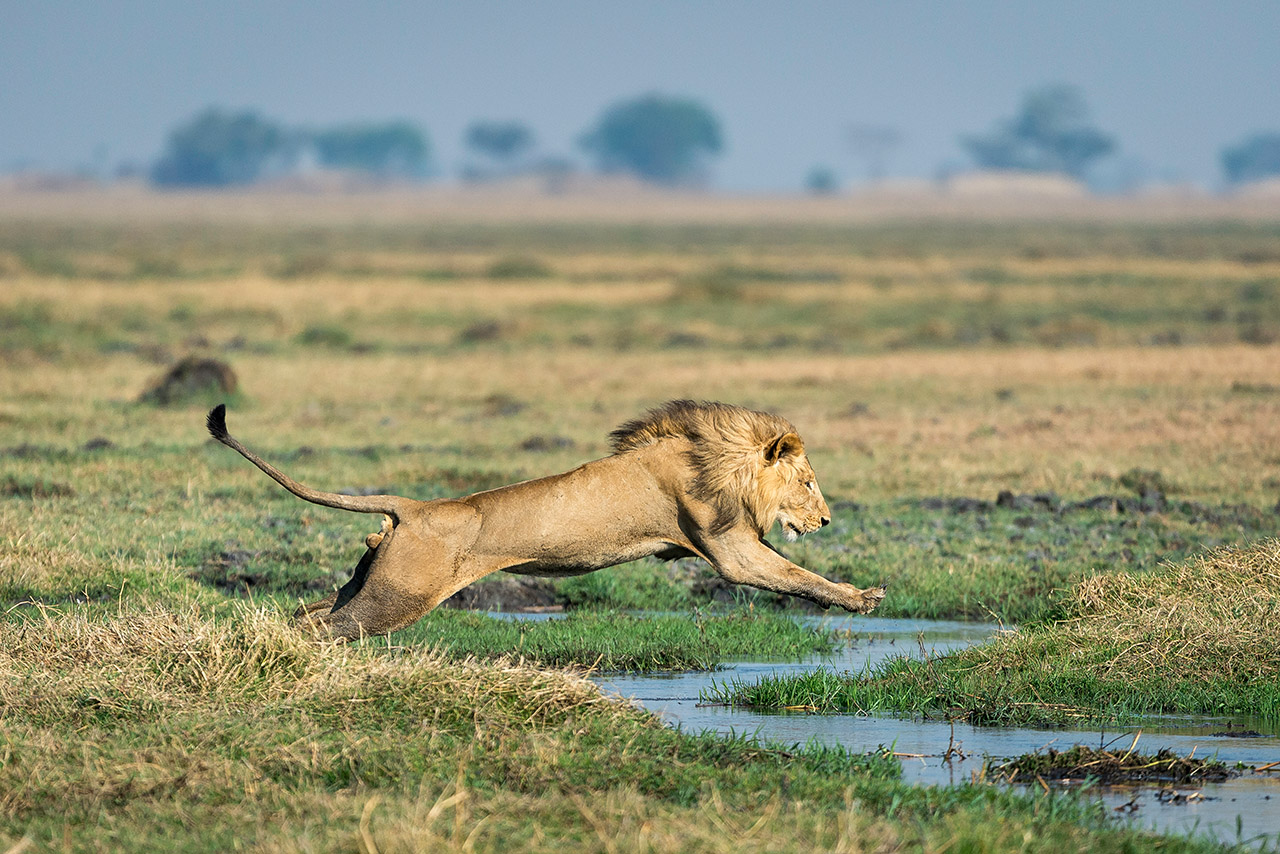

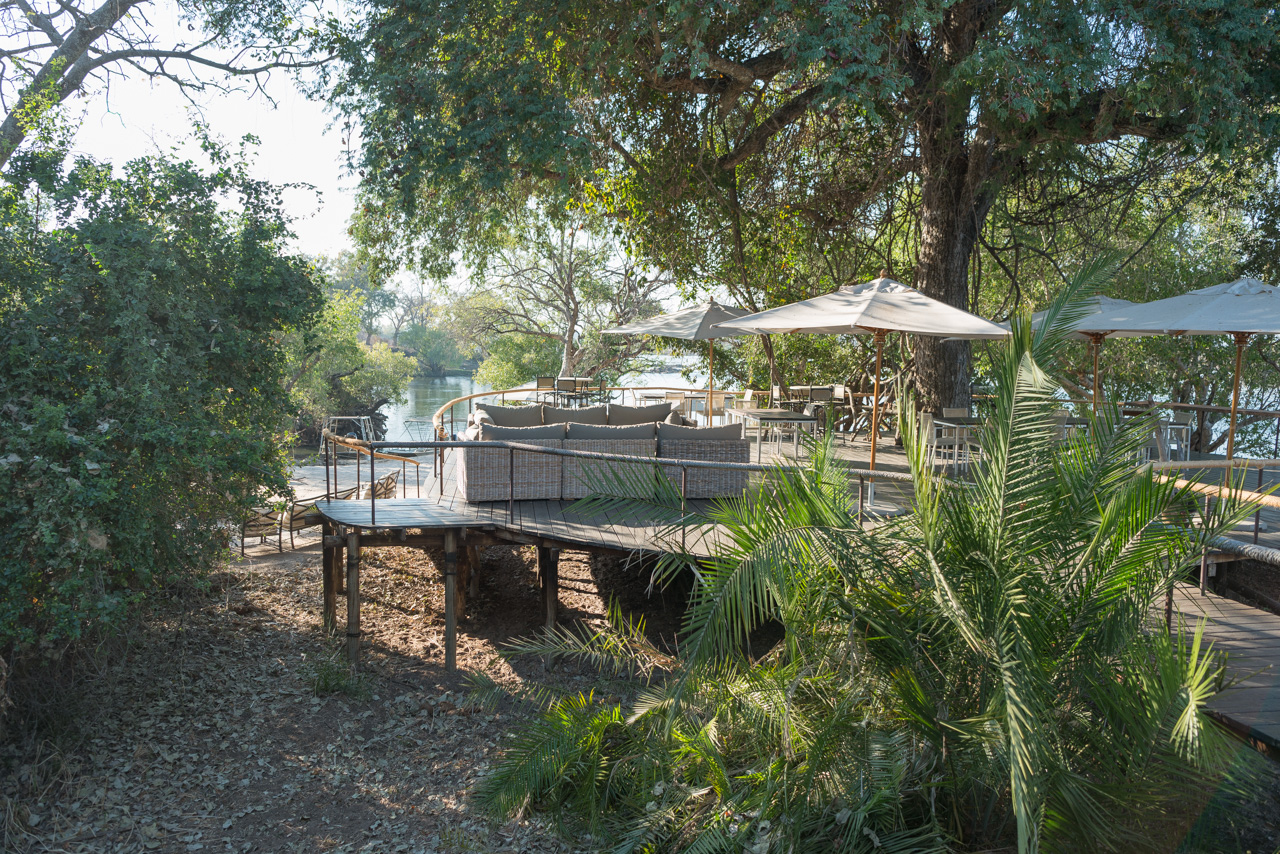
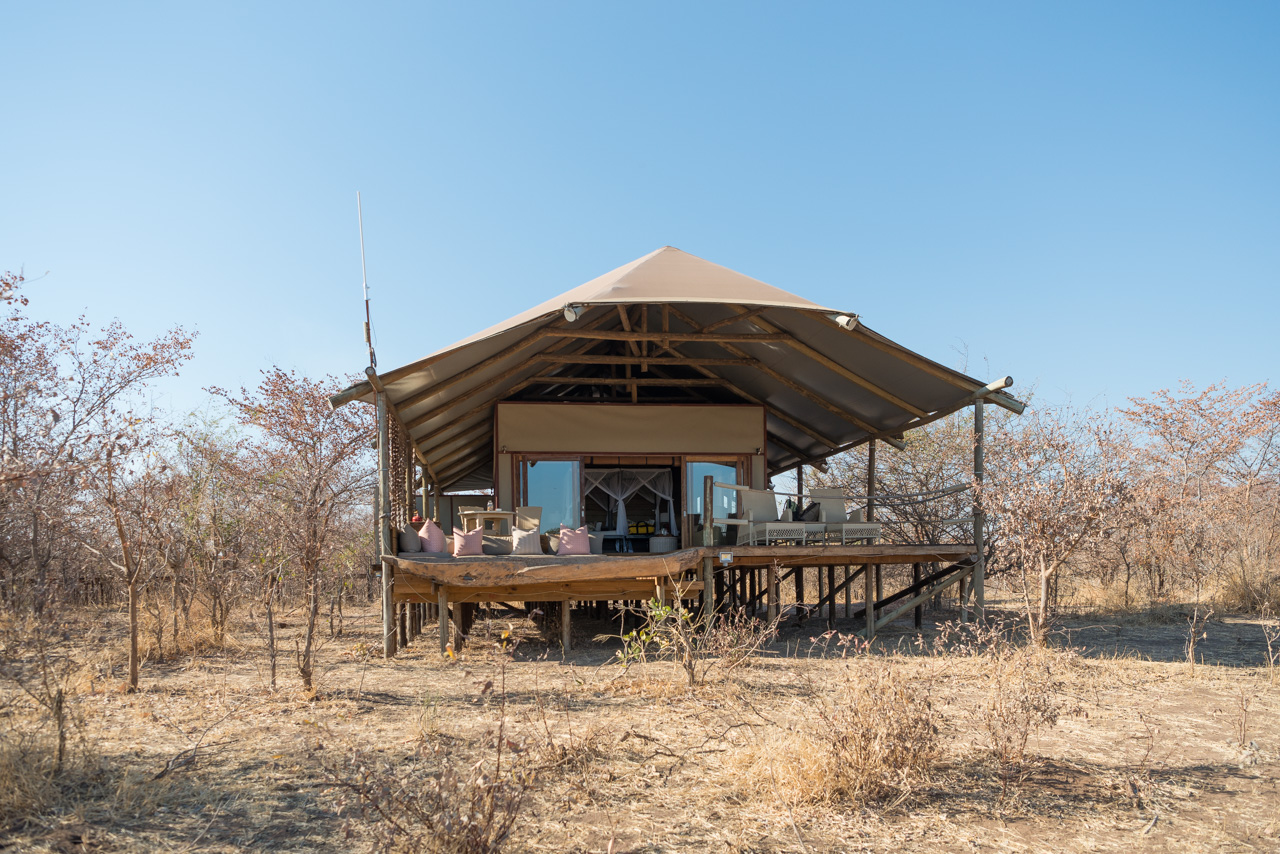

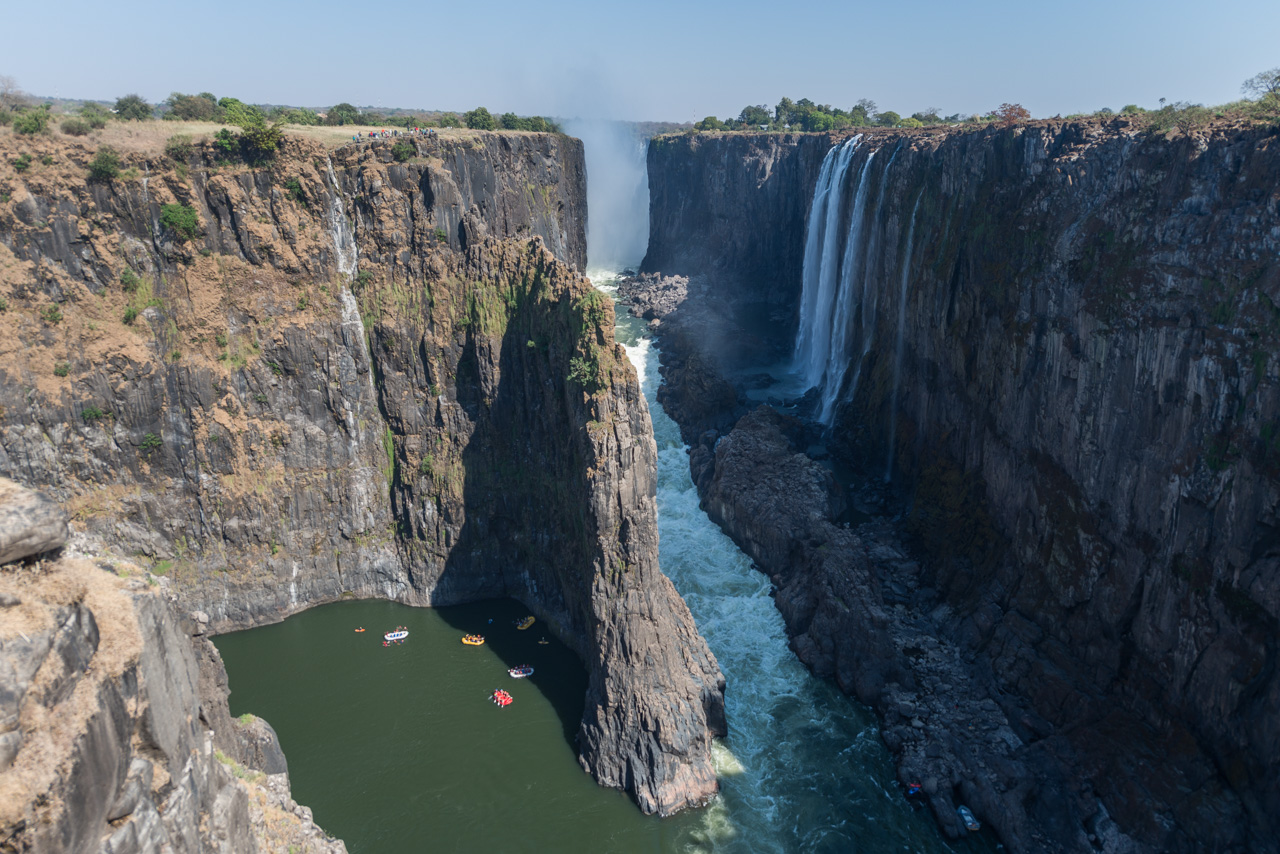
Accommodation Twelve luxury safari tents with en-suite bathroom are scattered along the banks of the Zambezi River. The rooms are connected by walkways to the main building. The meals are served on the sundeck by the pool or in the restaurant. From everywhere, great views of the Zambezi River can be enjoyed.
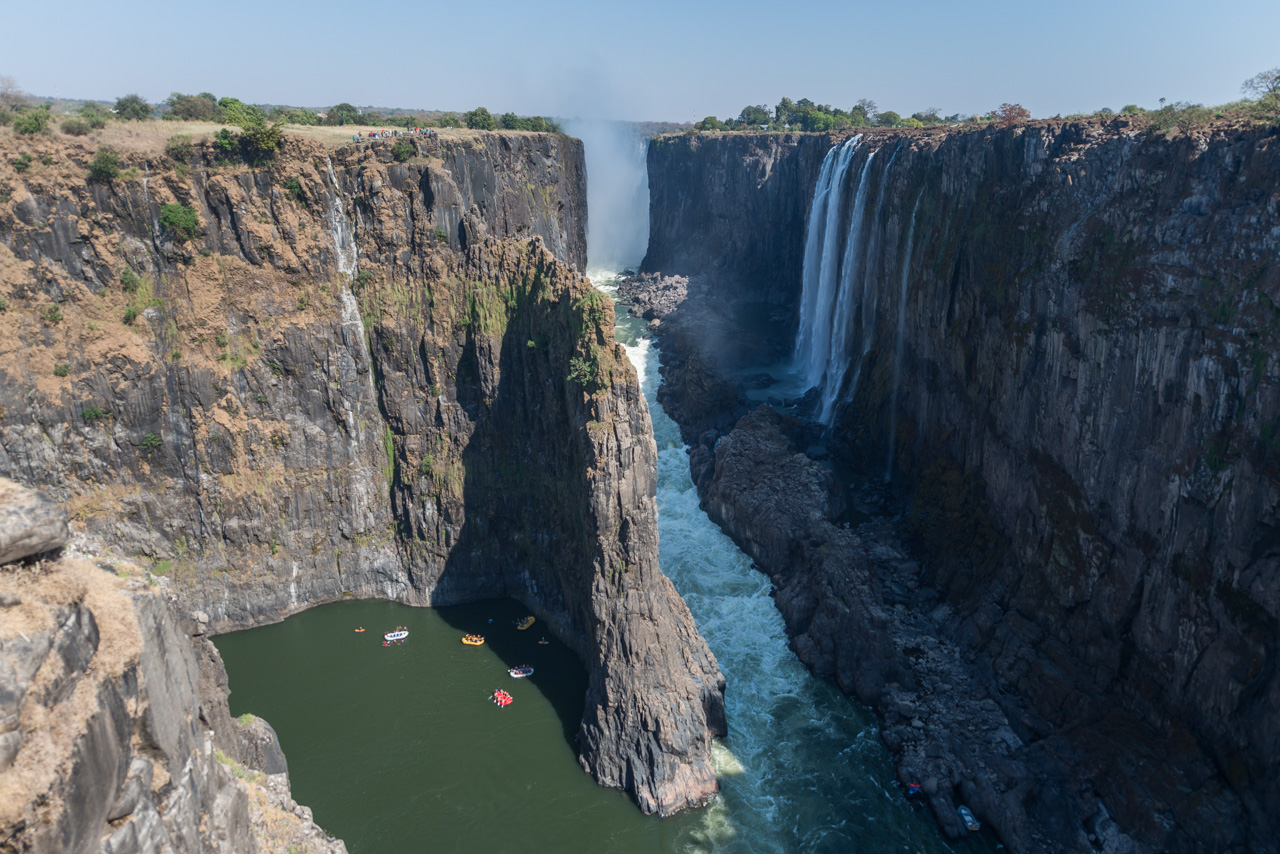
The Zambezi River originates in the northwest of Zambia and flows 2700 km to the Pacific Ocean. It also flows past Livingstone before tumbling 100 m into the Batoka Gorge, which marks the border between Zambia and Zimbabwe.
The falls are known as ‘Mosi-oa-Tunya’ or ‘The Smoke that Thunders’ because the mist can rise several hundred metres above the gorge during the wet season, making it visible for miles around and therefore a well-known landmark.
If you prefer less action, then we recommend the really good camps Toka Leya, River Club and Tongabezi, which are all located some 30 minutes upstream, close to Mosi-oa-Tunya National Park. There is no helicopter noise here and the camps offer guides, who can organise everything on site and accompany you on your chosen activities.
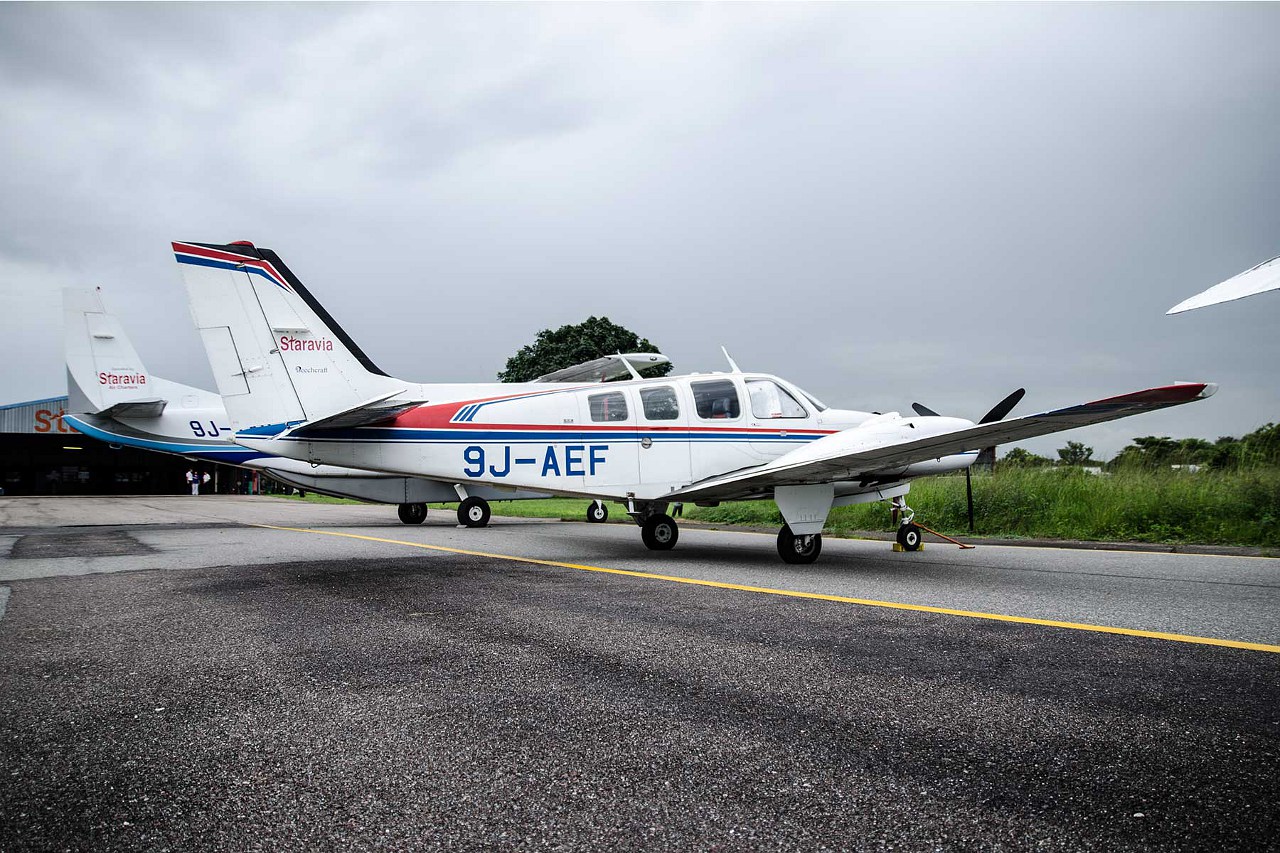

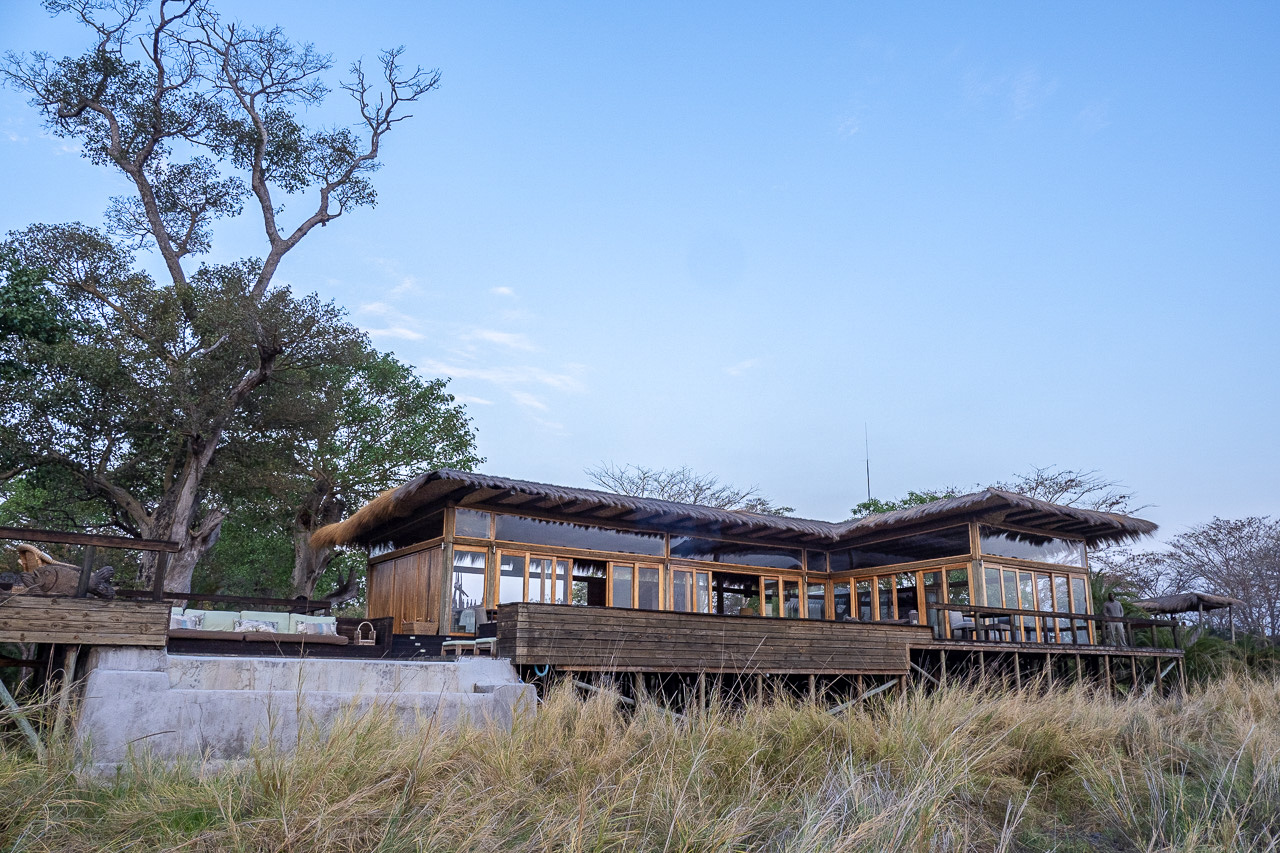
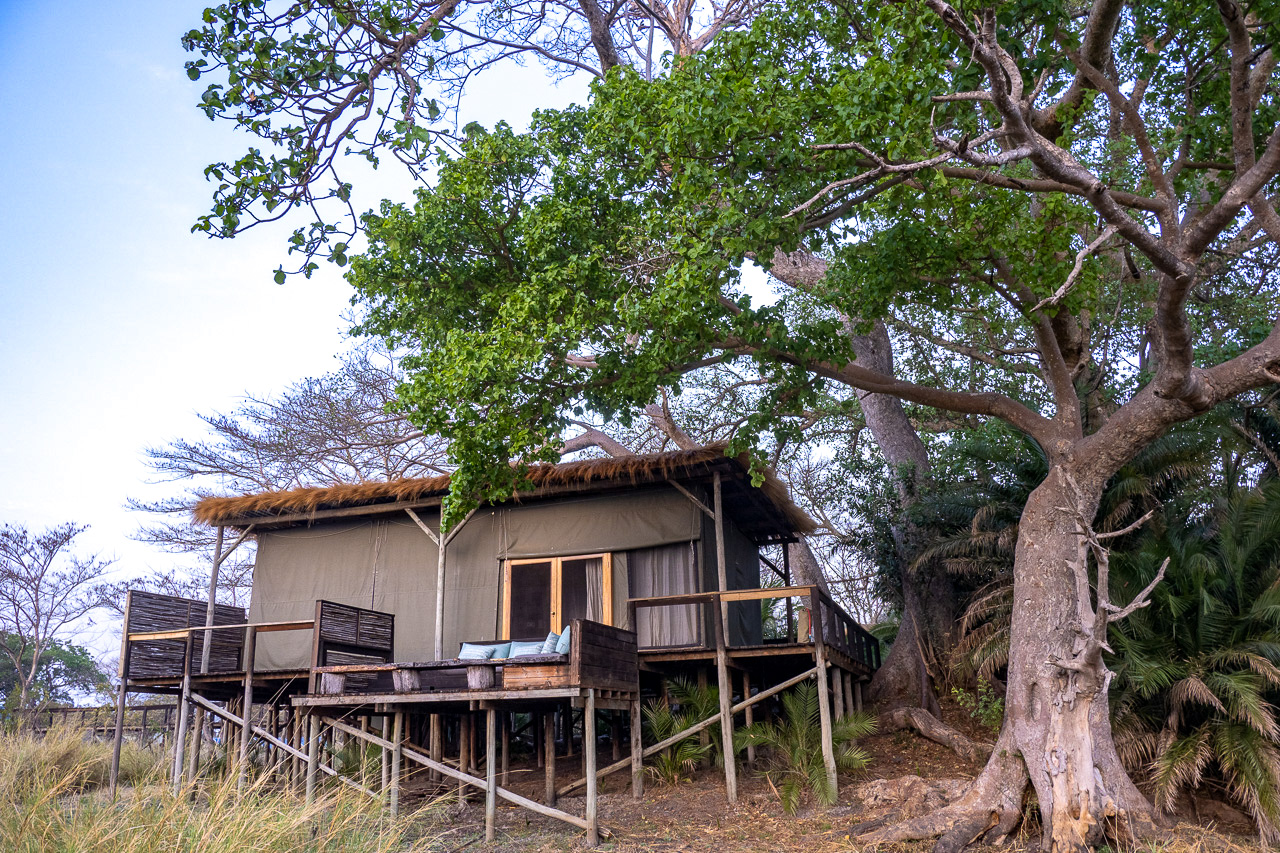
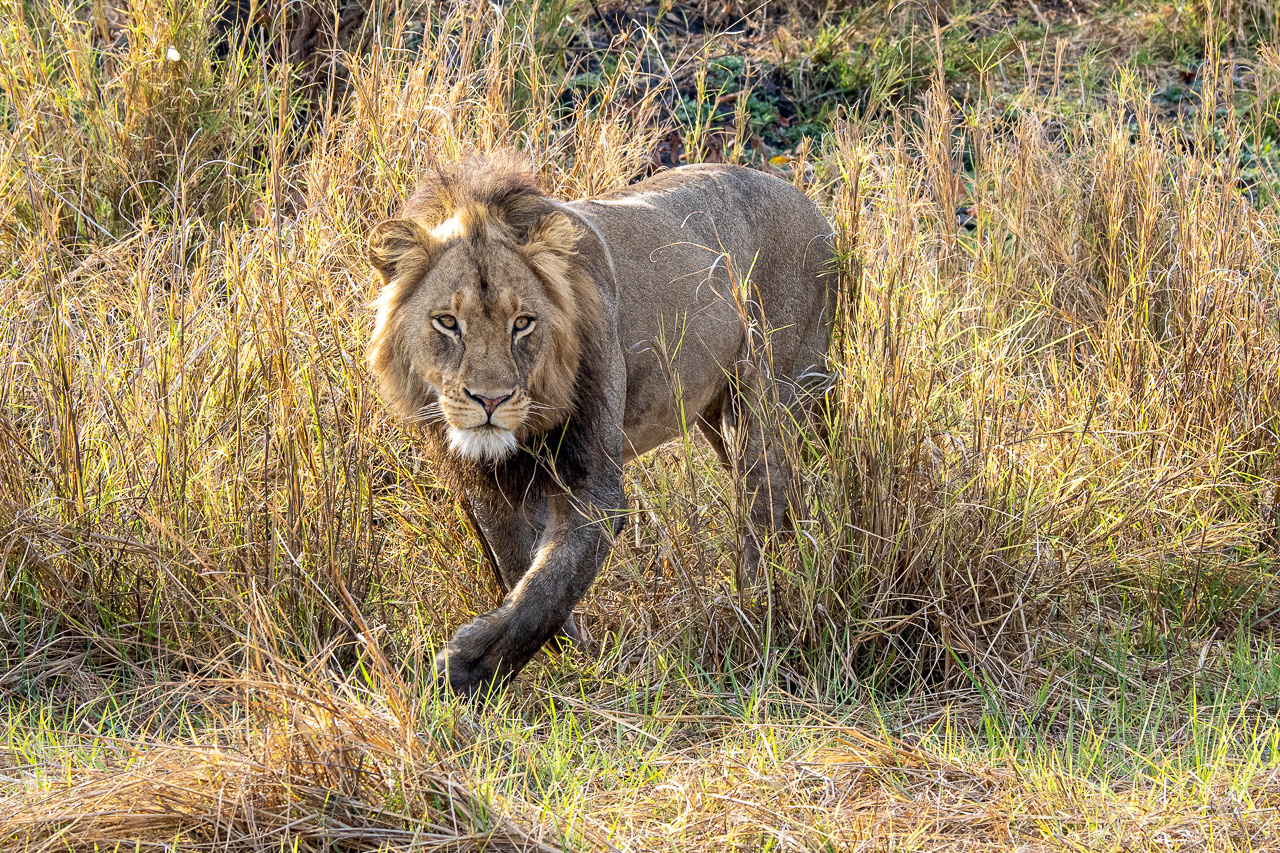
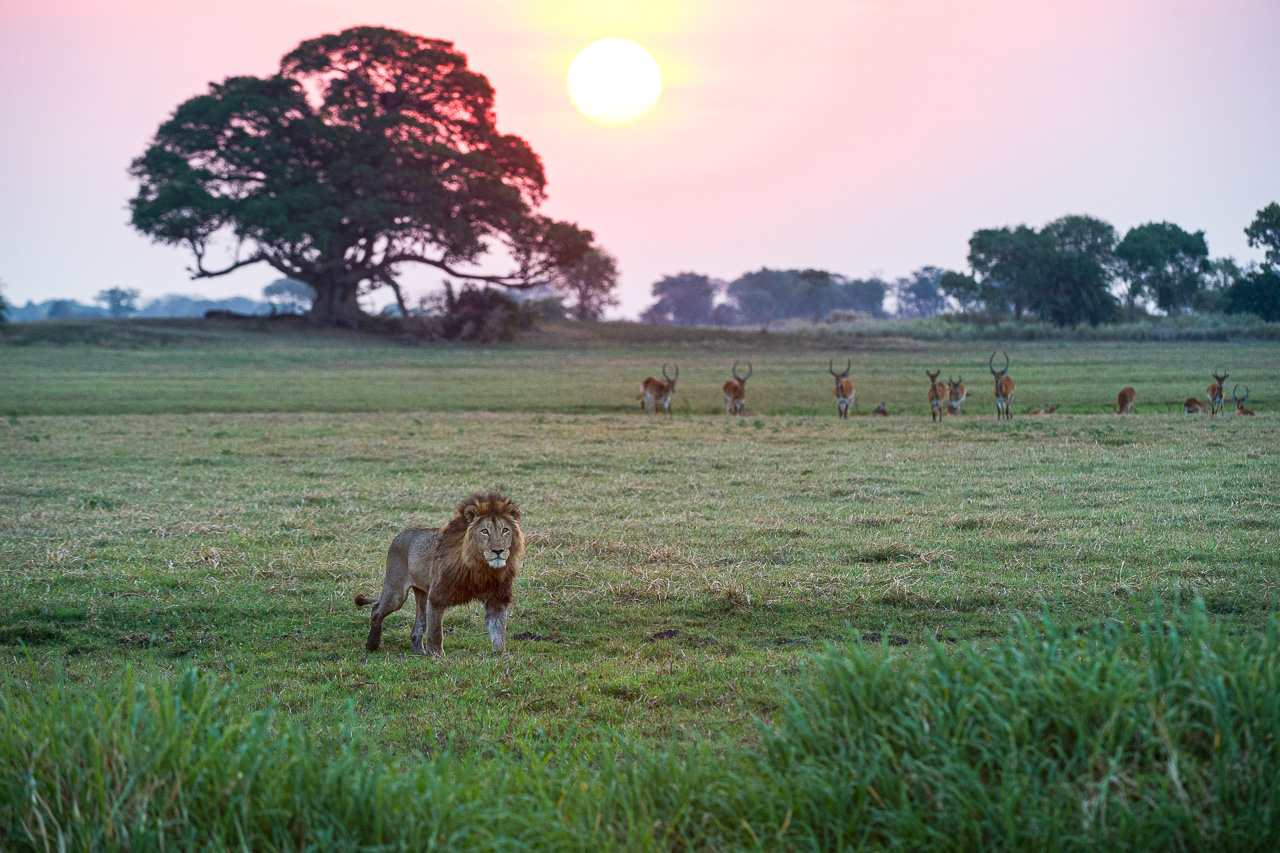
Accommodation
Shumba Camp (lion's camp) is shaped like a horseshoe, with the main building taking central position and three rooms connected by high wooden walkways on either side. The rooms sit on high platforms and come with a large double bed, desk, en-suite facilities, double washbasin and outdoor shower.
The main building features a large terrace with fire pit where breakfast is served. It is the perfect spot to enjoy a cup of coffee and watch the sun rise over the Busanga Plains. The indoor area houses a bar, lounge and dining area with large glass windows leading out onto the deck.
Puku and red lechwe tend to gather in front of the camp as well as hippo during the flood season. Guests can loll in the hanging chairs and simply take in the spectacular surroundings. Lions regularly visit the camp, keeping everyone on their toes. Shumba Camp is most certainly one of the most beautiful camps in Kafue. Located just 15 minutes away, Busanga Bush Camp is suitable for those looking for a less luxurious bush experience.
Kafue National Park covers an area of 22’400 km² which makes it one of the largest parks in Africa. The northern part of the park is home to the spectacular Busanga Plains, which flood during the wet season and gradually dry up again as October approaches. As the dry season progresses and the surrounding water holes dry up, more and more wildlife find their way onto the plains. Most camps open in May/June and close again in November when the rains arrive.
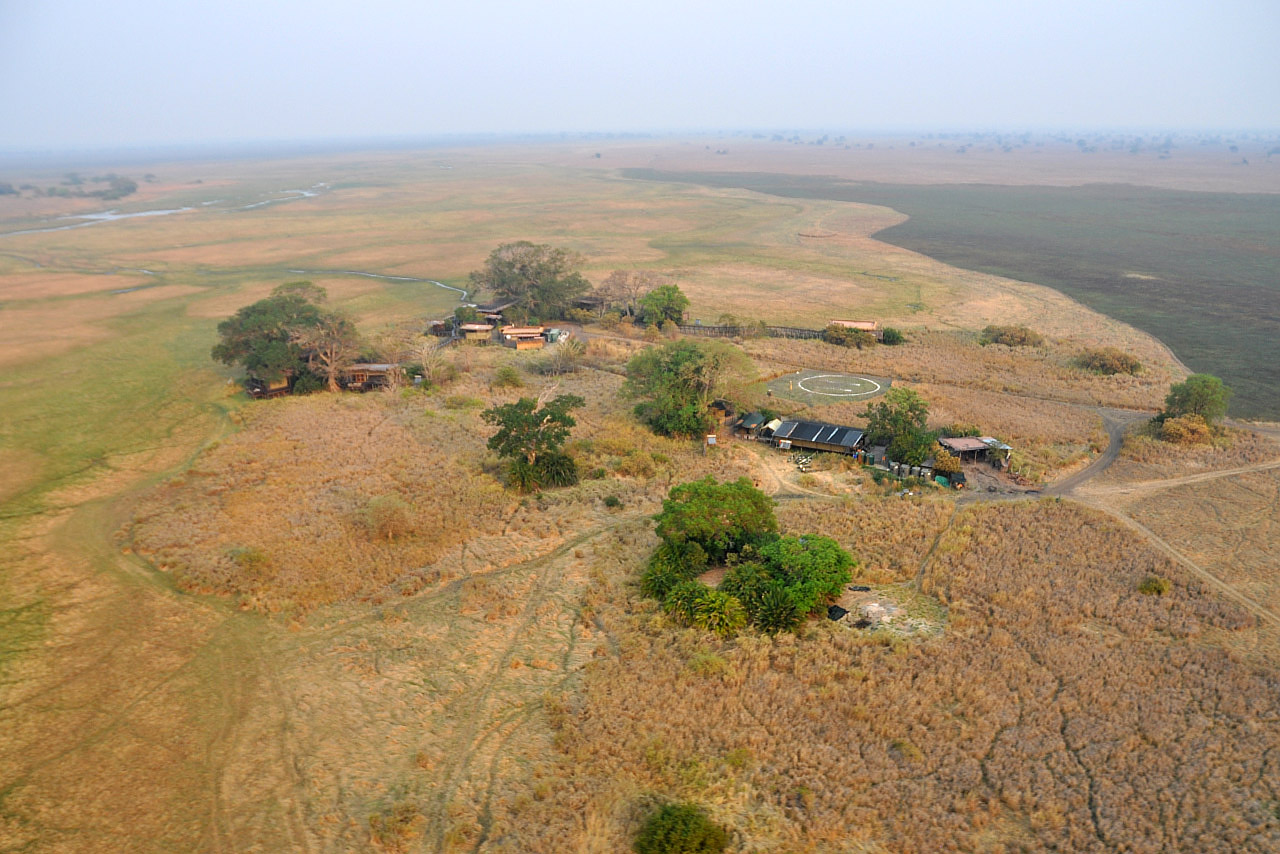
Kafue National Park sits at a height of 1350 m above sea level and covers 22’400 km². The three rivers Lufupa, Lunga and Kafue all carve their way through the park before being blocked by the Itezhi Tezhi Dam in its southern part.
The northern part of the park is home to the spectacular Busanga Plains, which flood during the wet season and gradually dry up again as October approaches. Flooding reaches its peak in March/April. Most camps open in May/June and close again in November when the rains arrive.
Busanga Plains supports a broad spectrum of wildlife, but not in large numbers. Nevertheless, it is definitely worth a visit, as there are not many places where you get to see wattled crane, crowned crane, sitatunga, puku, red lechwe, wildebeest, sable and roan antelope, leopard and lion all in one day.
The park also supports cheetah and wild dog. Elephant wander across the plains, but again not in large numbers. The Busanga Plains become a paradise for bird lovers from April to June: 491 species have been spotted here to date.
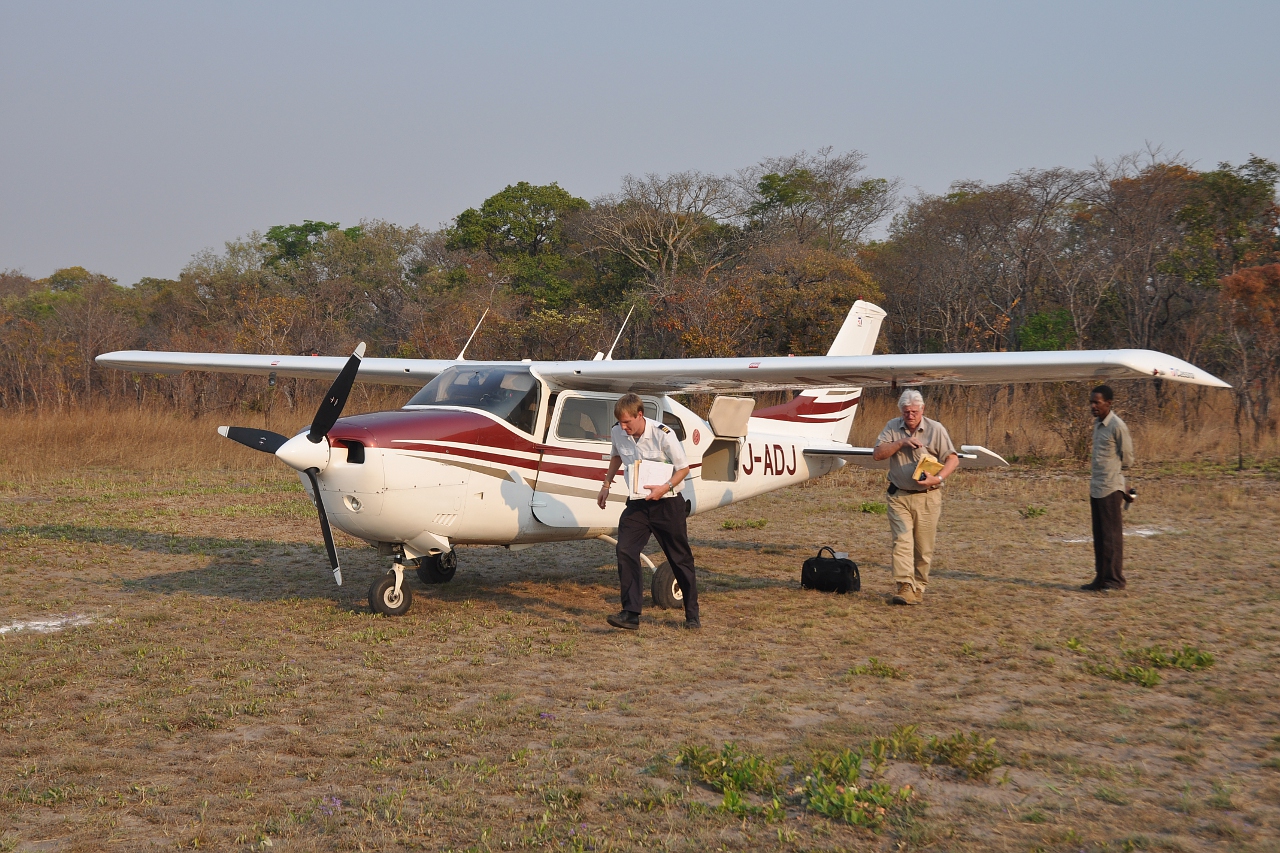
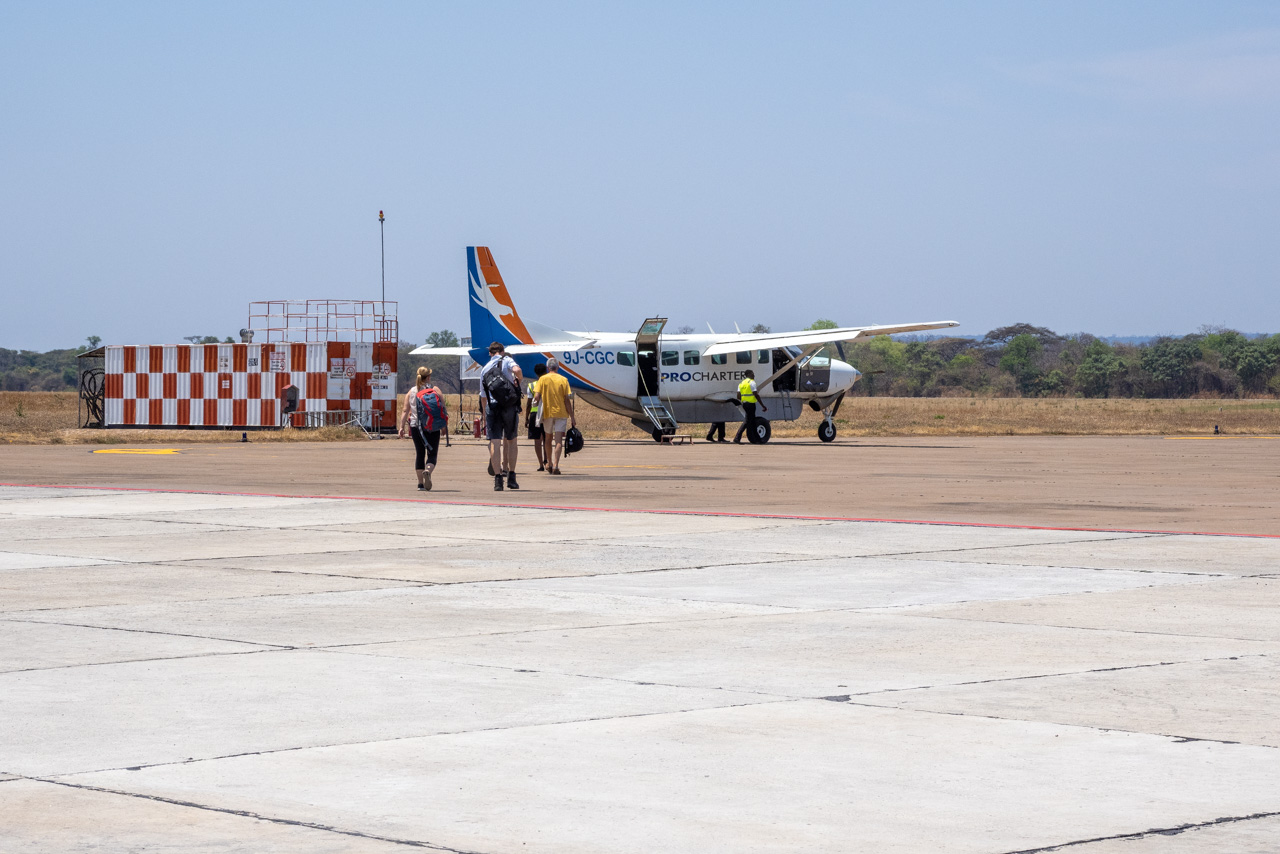

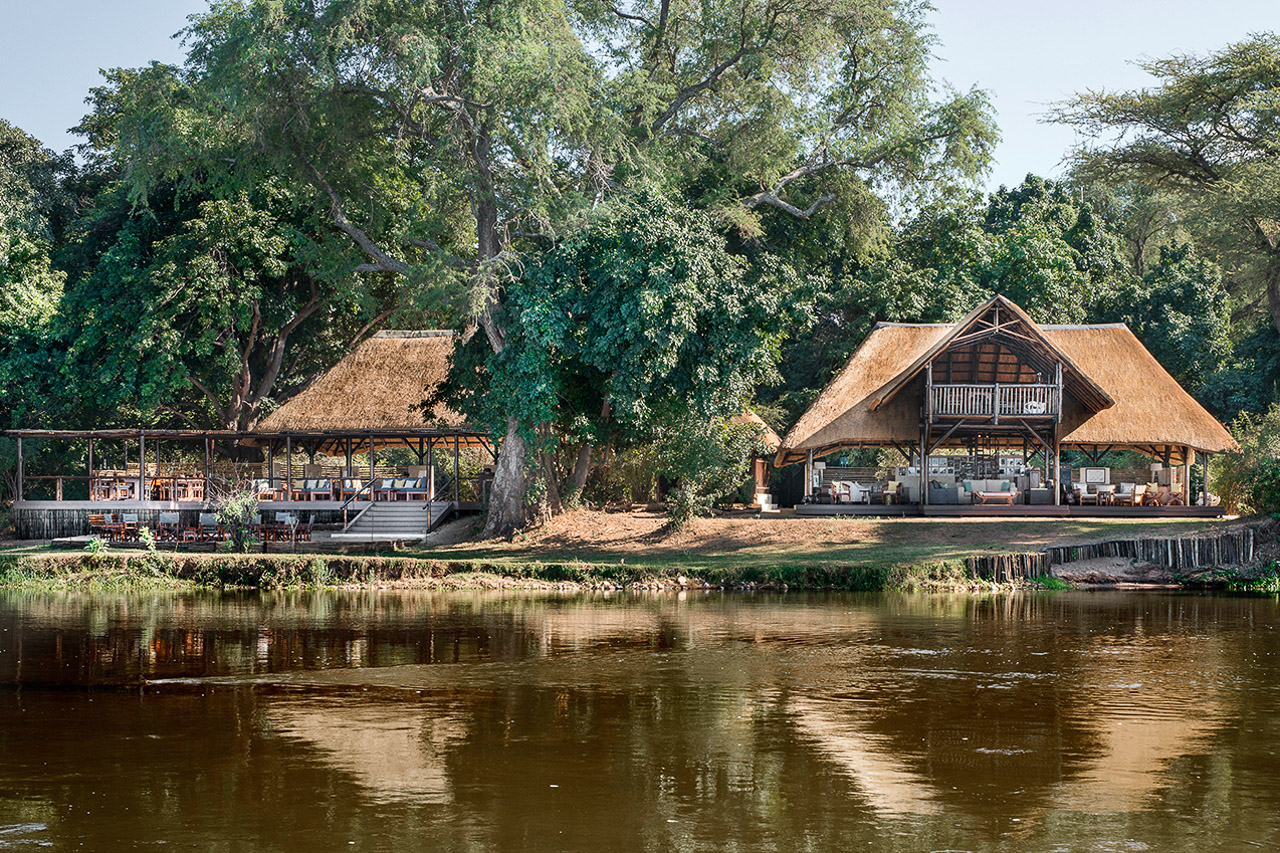

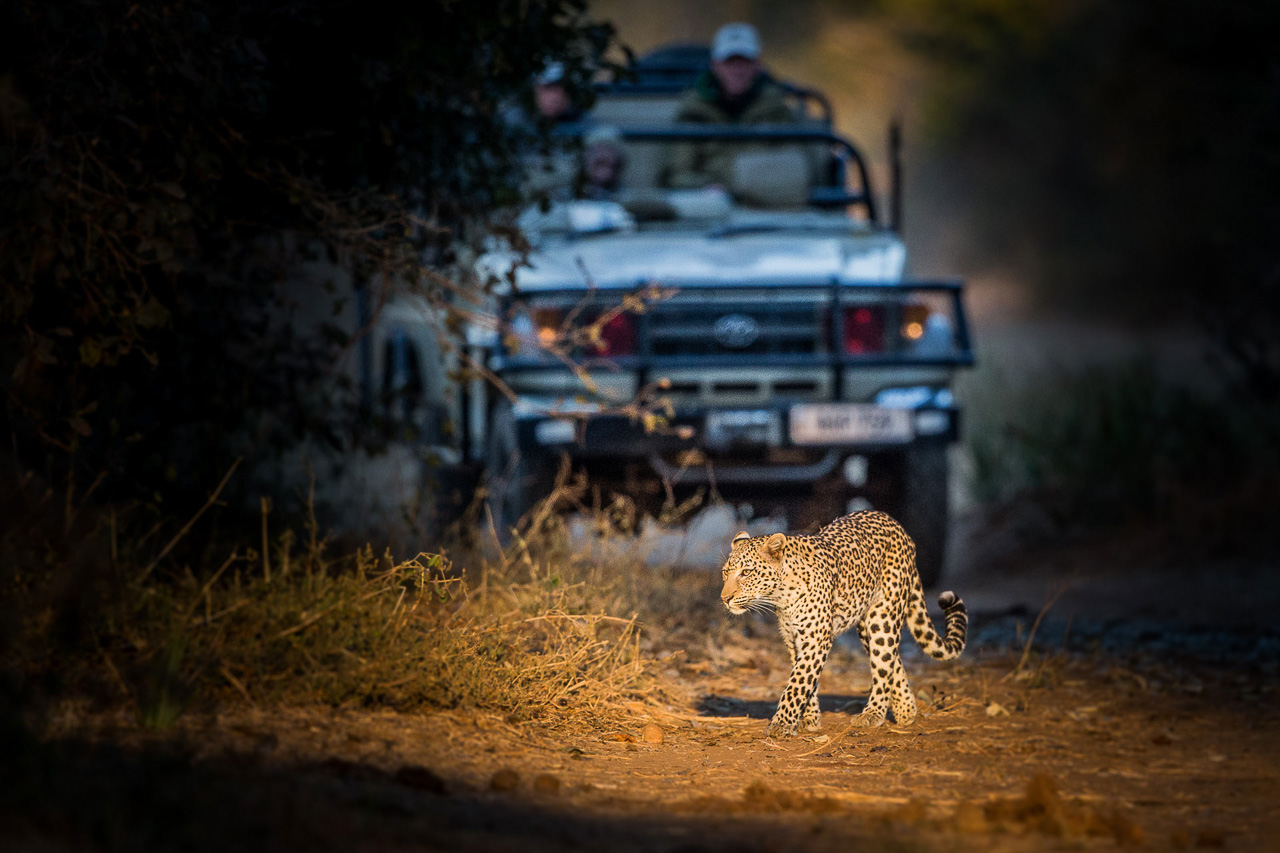
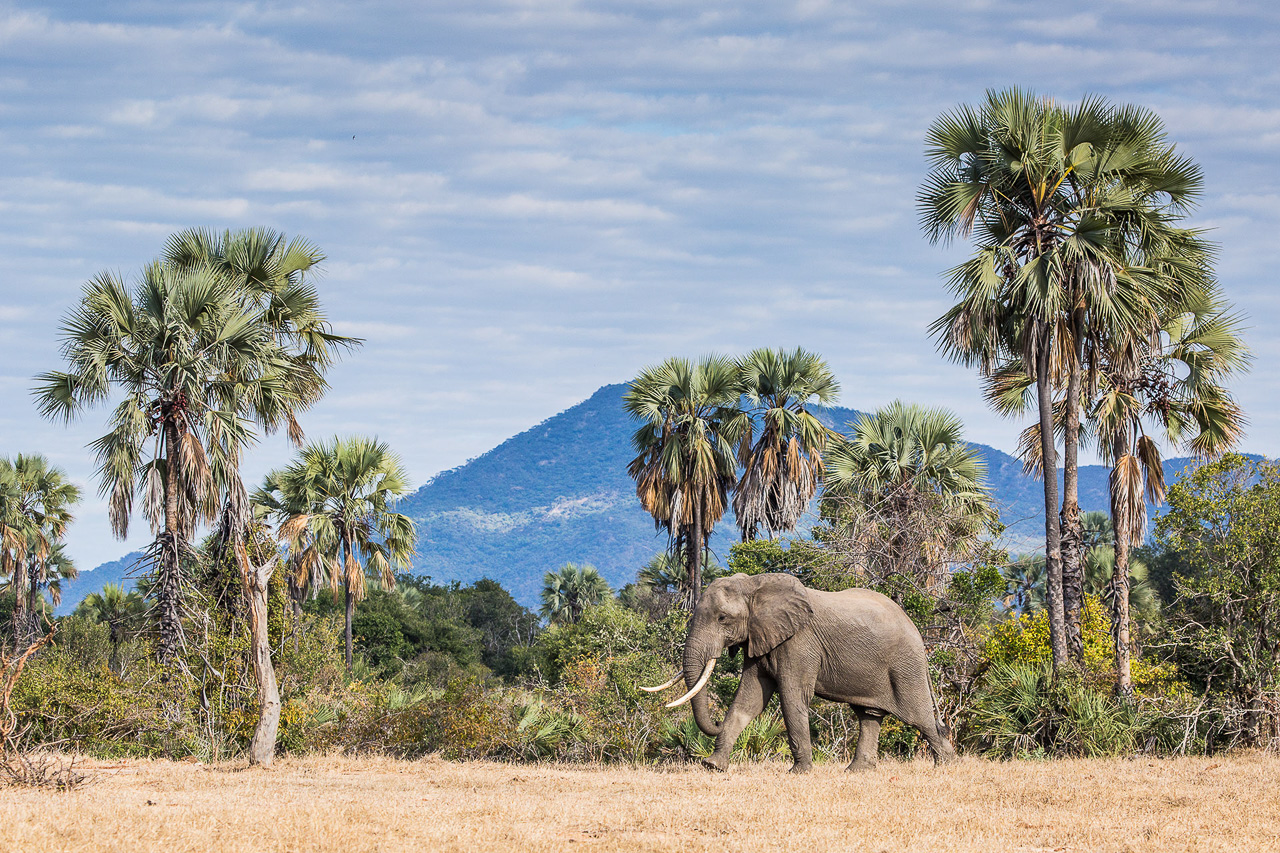
Accommodation
Built in 1989 by the Cumings family, Chiawa Camp was the first safari camp to be erected in Lower Zambezi National Park. The owner family has invested hugely in protecting wildlife and developing the park, and deserves every respect for their monumental effort. The camp has received numerous awards over the years for its excellent personal service, fantastic management and bespoke activities.
Chiawa offers eight tastefully designed en-suite rooms with views of the river. Nestled beneath shade-giving trees, each sits slightly elevated atop a wooden platform. The verandas invite guests to sit back and relax, disturbed only by the odd elephant strolling about to say hello. Room 9 (Safari Suite differs from the others in that it offers more comfort and space and is situated a little way off atop a hillock with spectacular wide-reaching views of a dry valley and the nearby Zambezi River.
The two-storey main building consists of a lounge with bar, dining area, curio shop, pool with open fitness area and fire pit where breakfast is served. At Chiawa Camp, guests are not allowed to walk alone from their room to the main building during the day, as numerous elephants often roam the camp. Guests arrange pick-ups by radio.
The camp is accessed by air from Lusaka to Jeki Airstrip in 40 minutes. A 50-minute boat transfer takes guests to the camp.
Chiawa's sister camp, Old Mondoro, is located further east.
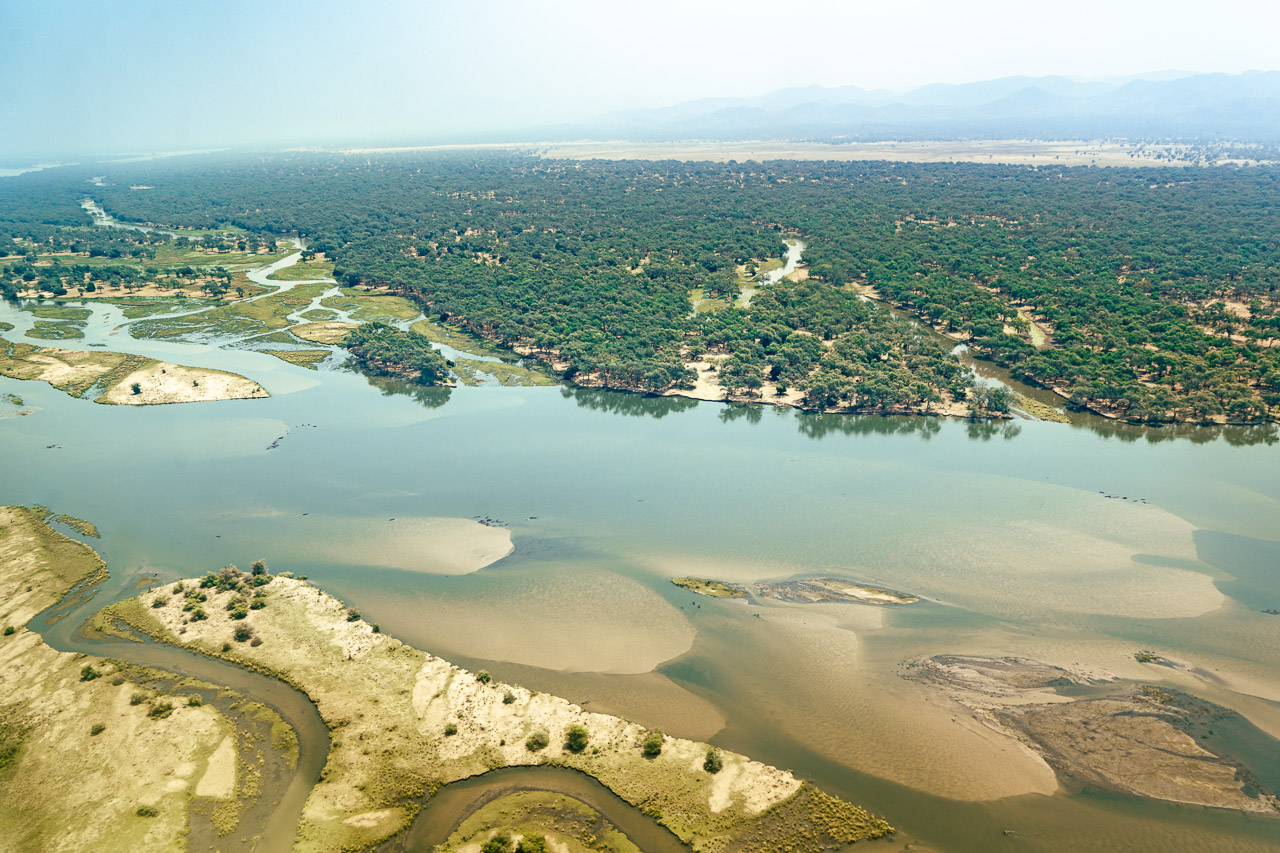
The camps are all located on the riverside, which pulls in large herds of elephant and buffalo. The best camps offer canoeing safaris on the Zambezi’s tributaries or trips on the Zambezi River in flat-bottomed boats. In addition to game drives, walking safaris are also usually on offer – there is something different to do here every day.
An abundance of elephant gathers in the Lower Zambezi region, and the pachyderms are permanent visitors to the camps, so keep your eyes peeled when walking back to your room.
It gets very hot and sultry in October, just before the wet season begins. If you keen on walking and suffer from the heat, please visit earlier in the season.
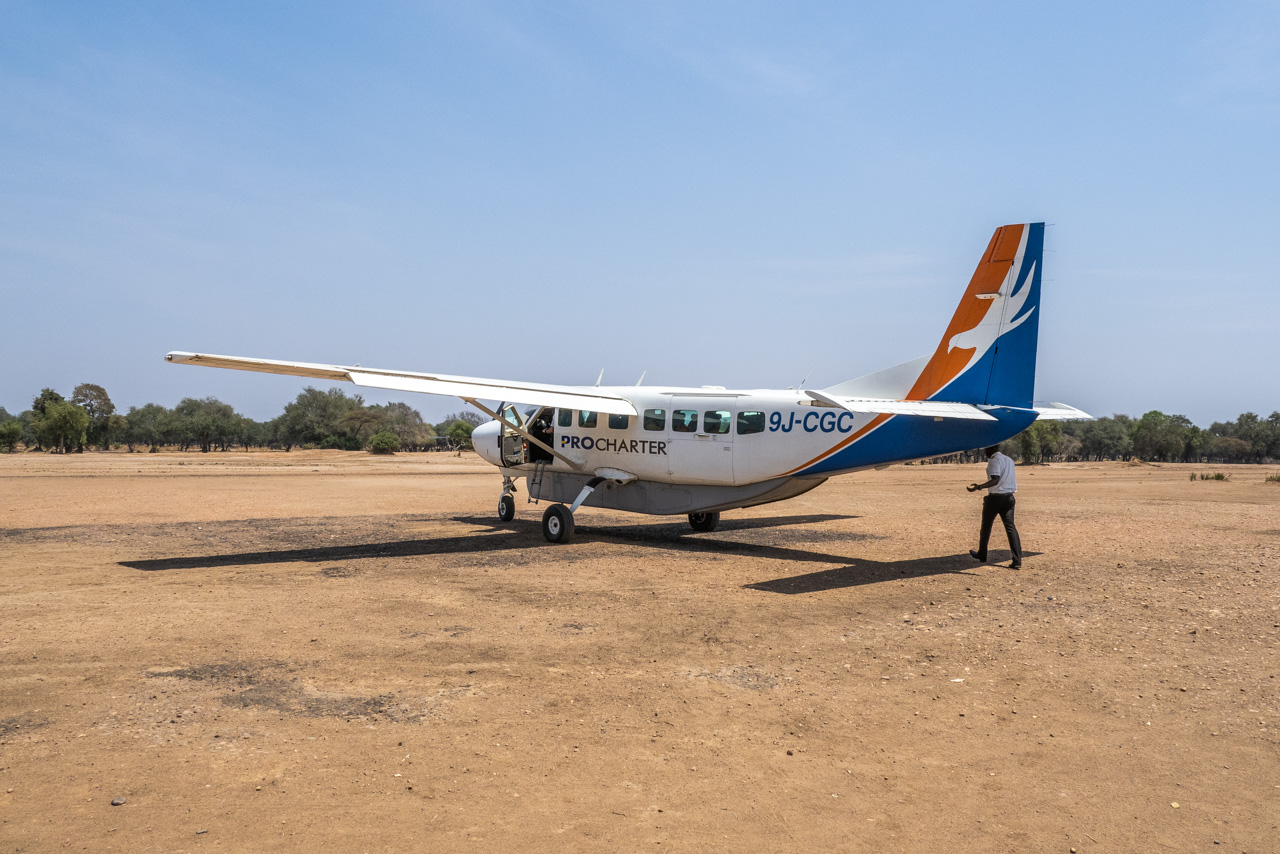
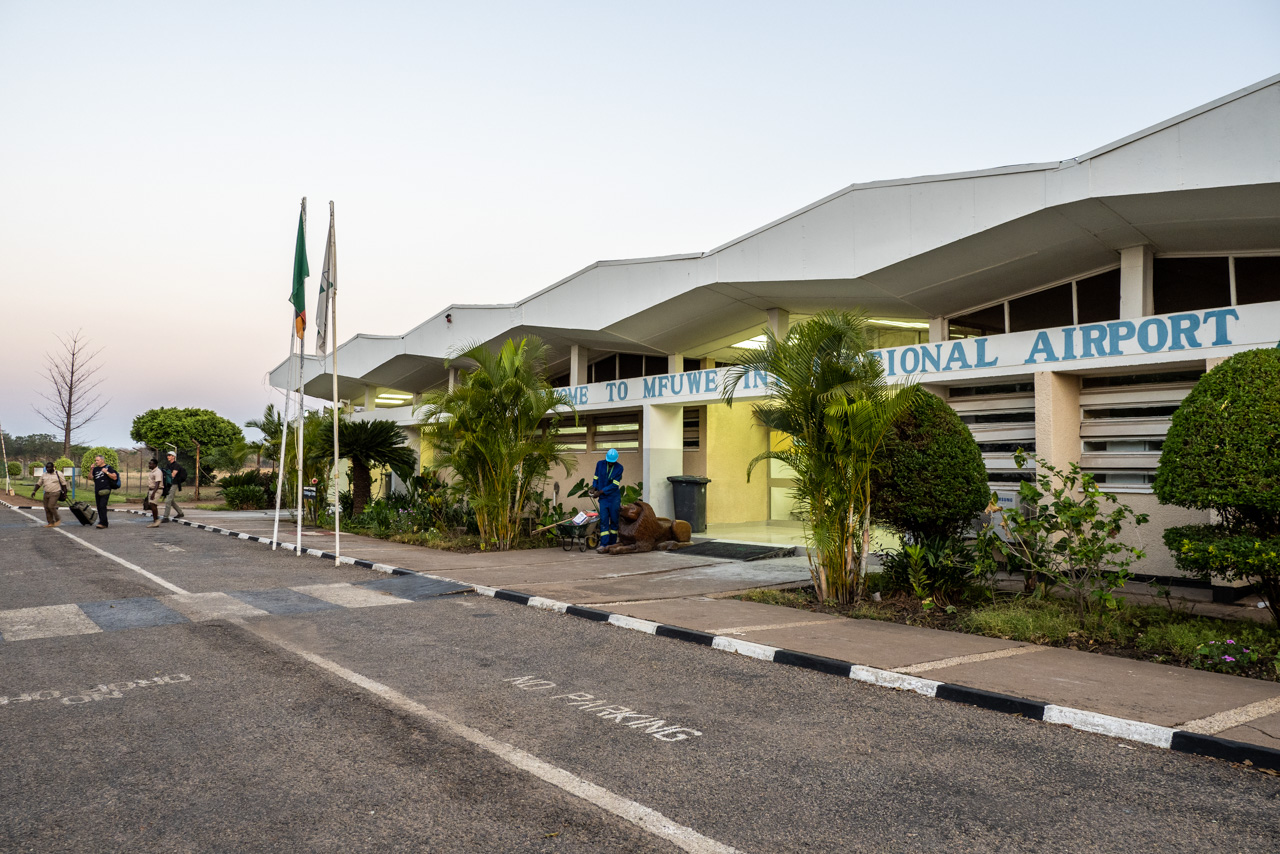

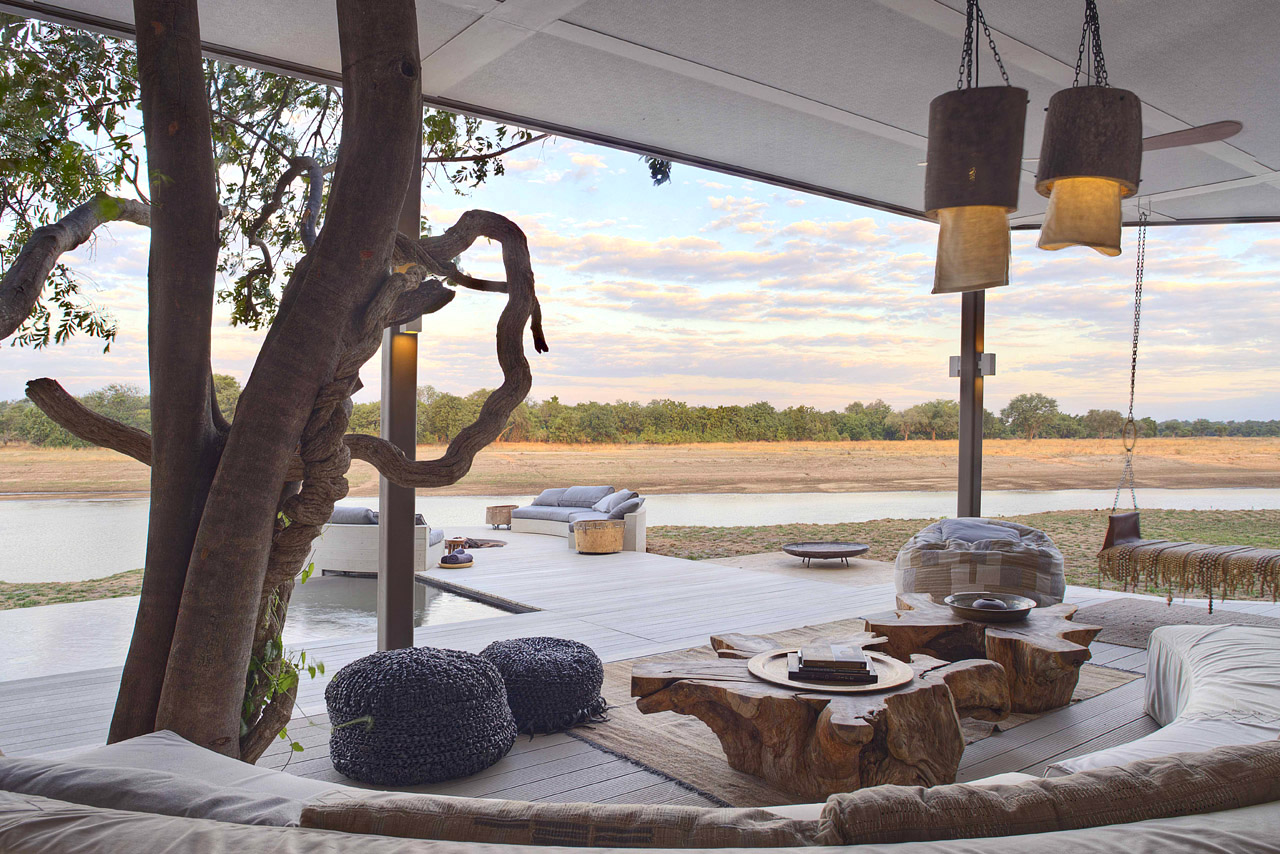
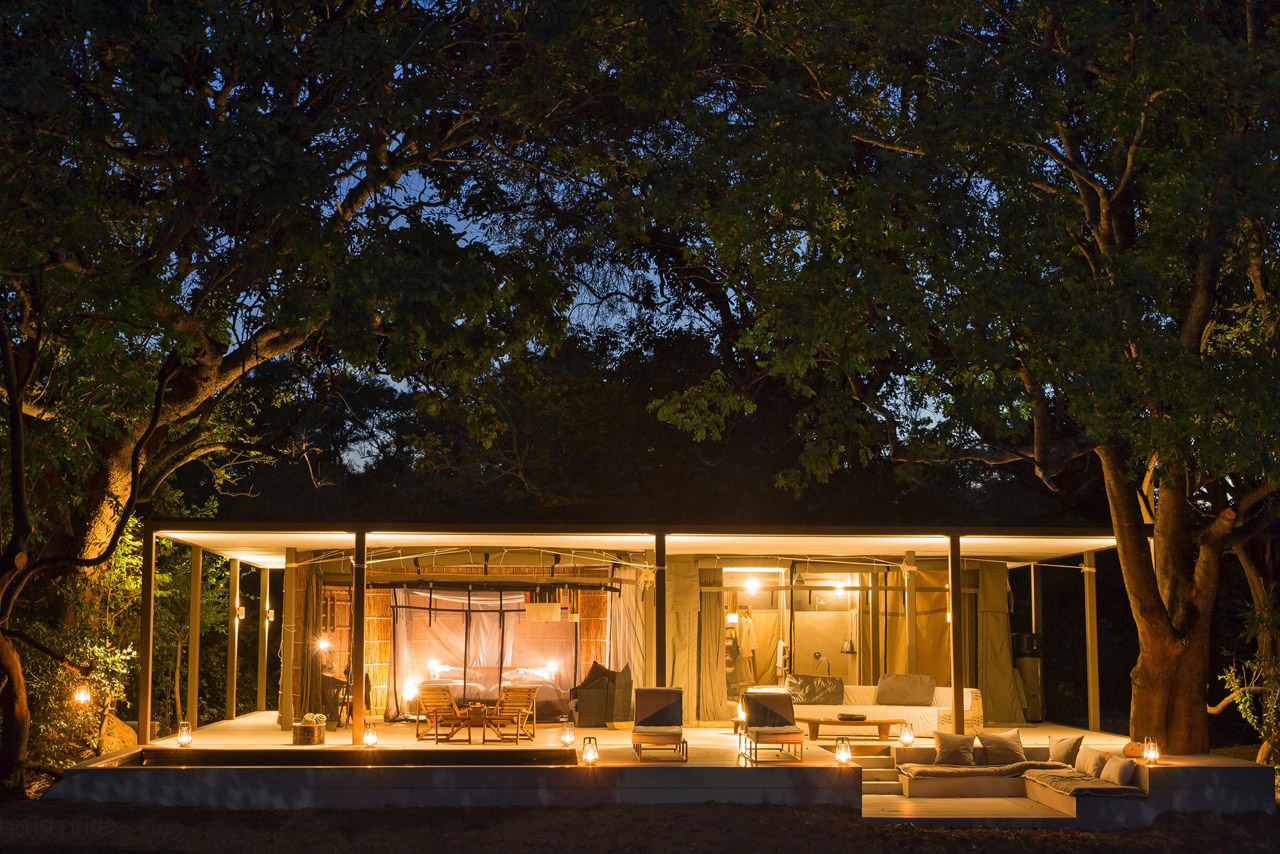
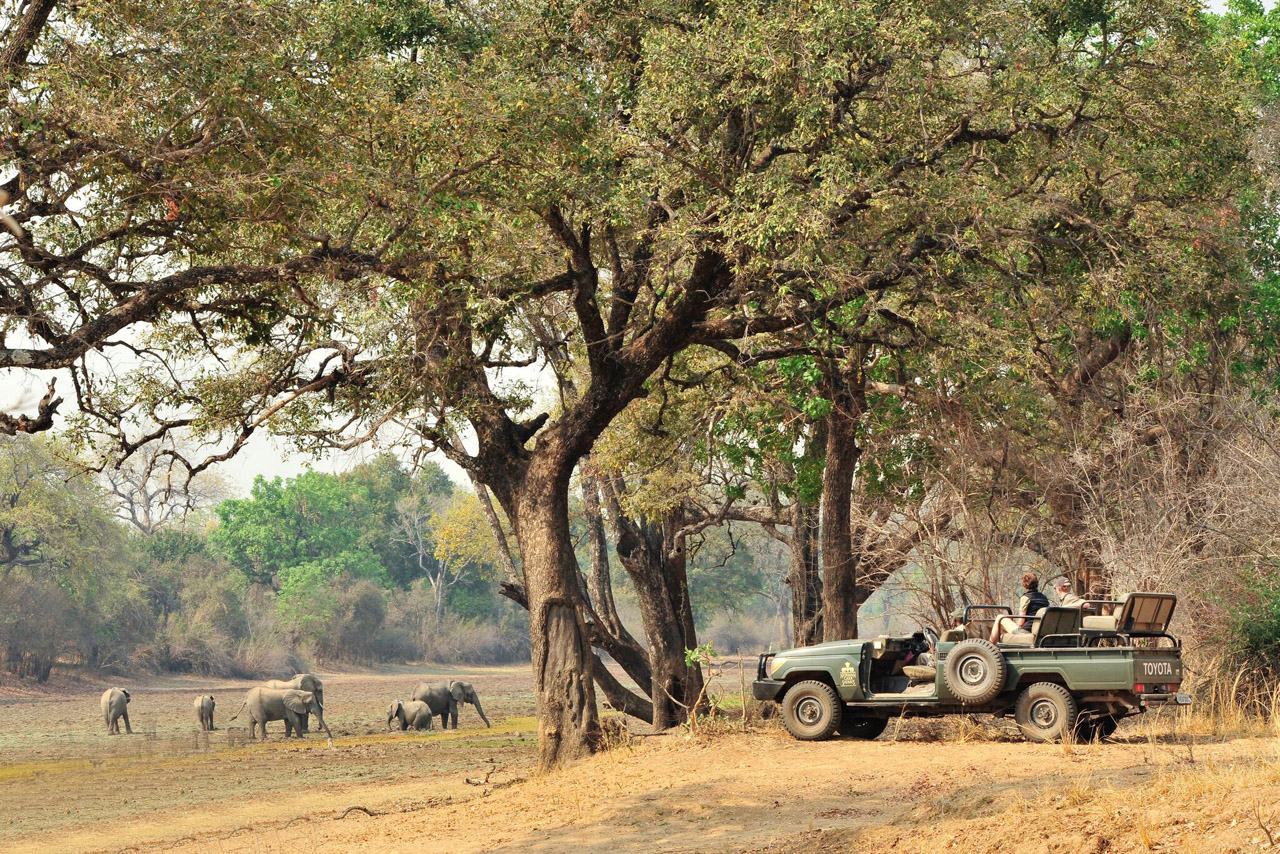
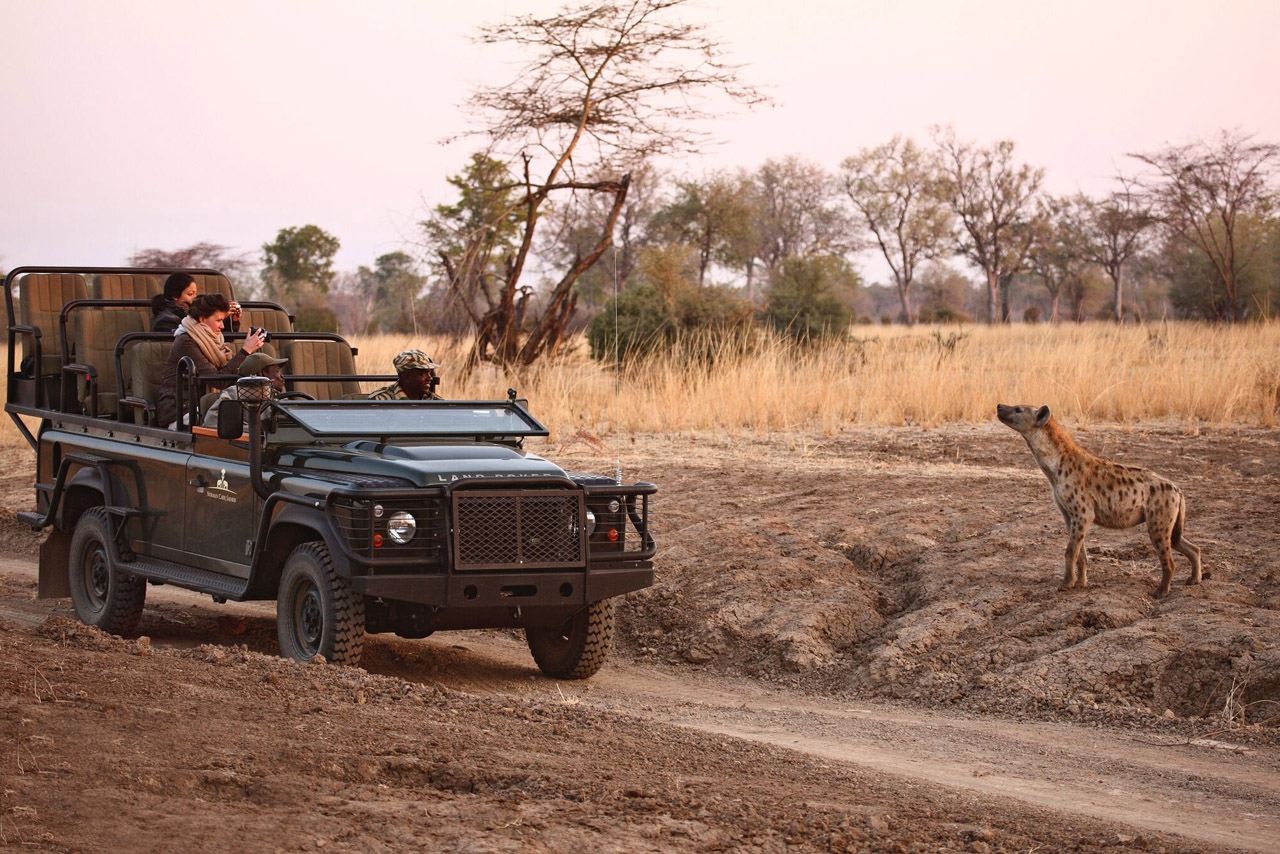
Accommodation
Chinzombo Camp brings levels of comfort, style and elegance previously unseen to the Luangwa Valley. Six spacious villas (150m2) – one of which is designed to accommodate a family of at least five are nestled within the shade of ancient trees in a wildlife rich area along the Luangwa River. Each villa has its own plunge pool and a large, bright terrace with a very comfy lounge. At Chionzombo guests truly get spoiled.
The spacious main building is equally stylish and includes a lounge corner, swimming pool, curio shop, an outdoor fireplace, bar and dining area. Here, guests don't eat together at a long table like in the classic bush camps. Chinzombo is more reminiscent of the Botswana camps in style and was built by the same architects who built some of the most famous Wilderness camps, including North Island in the Seychelles.
Guests cross the river by boat or by vehicle (if water levels permit) to access the National Park without having to cross Mfuwe main bridge. However, both sides of the river are equal when it comes to the abundance of wildlife they offer. Elephants cross the river all the time and know no park boundaries. In the morning some local fishermen may fish on the Luangwa, which is allowed here.
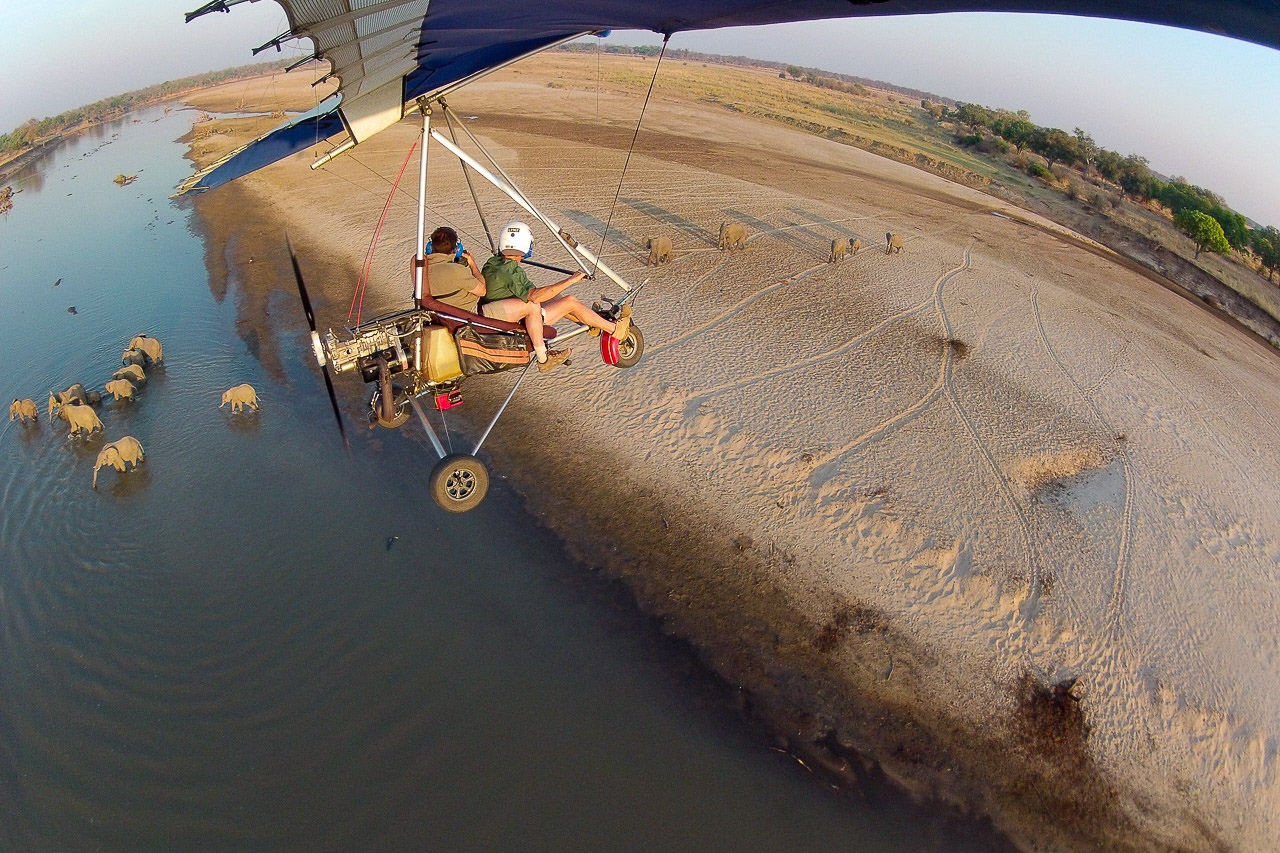
Most camps here are located close to the river, as this is where animals come to quench their thirst during the dry season. The dry season is also when the water level reaches its lowest point, exposing large sandbanks. The residual pools support high concentrations of crocodile and hippo, which tussle for the remaining water. When the wet season arrives in November, the water level rises rapidly, and the Luangwa becomes a raging torrent – it has even been known to take the odd camp with it.
The walking safari is South Luangwa’s speciality, and is available at every camp. At 500 m above sea level, the park is very hot during the summer months. If you’re not a fan of intense heat and don’t like walking safaris, then it’s best to visit earlier.
The Muchinga Escarpment, a natural boundary to the west, prevents the migration of animals. The park is bordered by the river to the east and extends into the Nsefu Sector, which stretches out from the other side of the river.
The park’s entrance gate is located at the town of Mfuwe, which has a small airport (this is where guests are picked up). Many of the less expensive camps are located outside the park, close to the main bridge. In our opinion, the central sector around Mfuwe Lodge suffers a bit from traffic coming in over the bridge. For this reason, we recommend that you avoid the main bridge and visit the southern sector, the northern sector or Nsefu sector to experience quieter safaris.

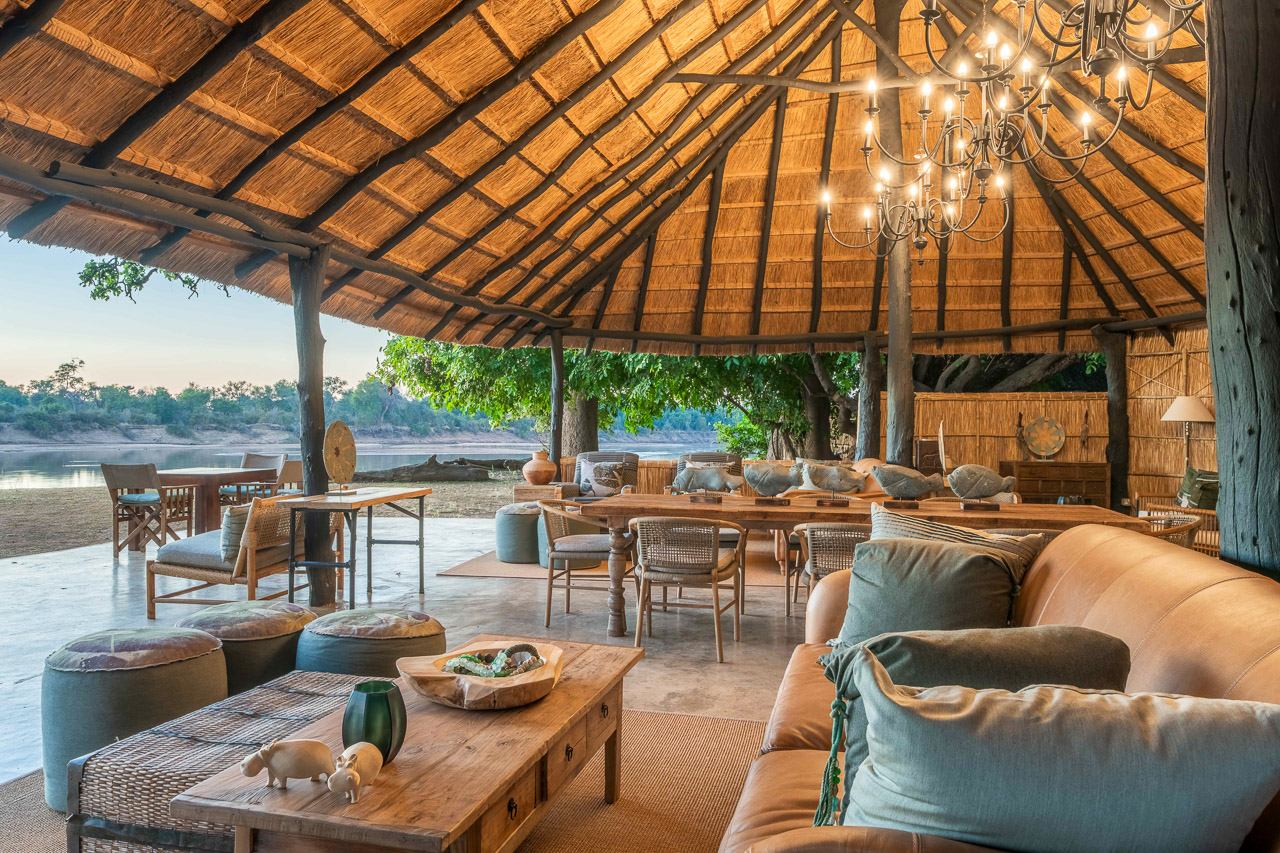
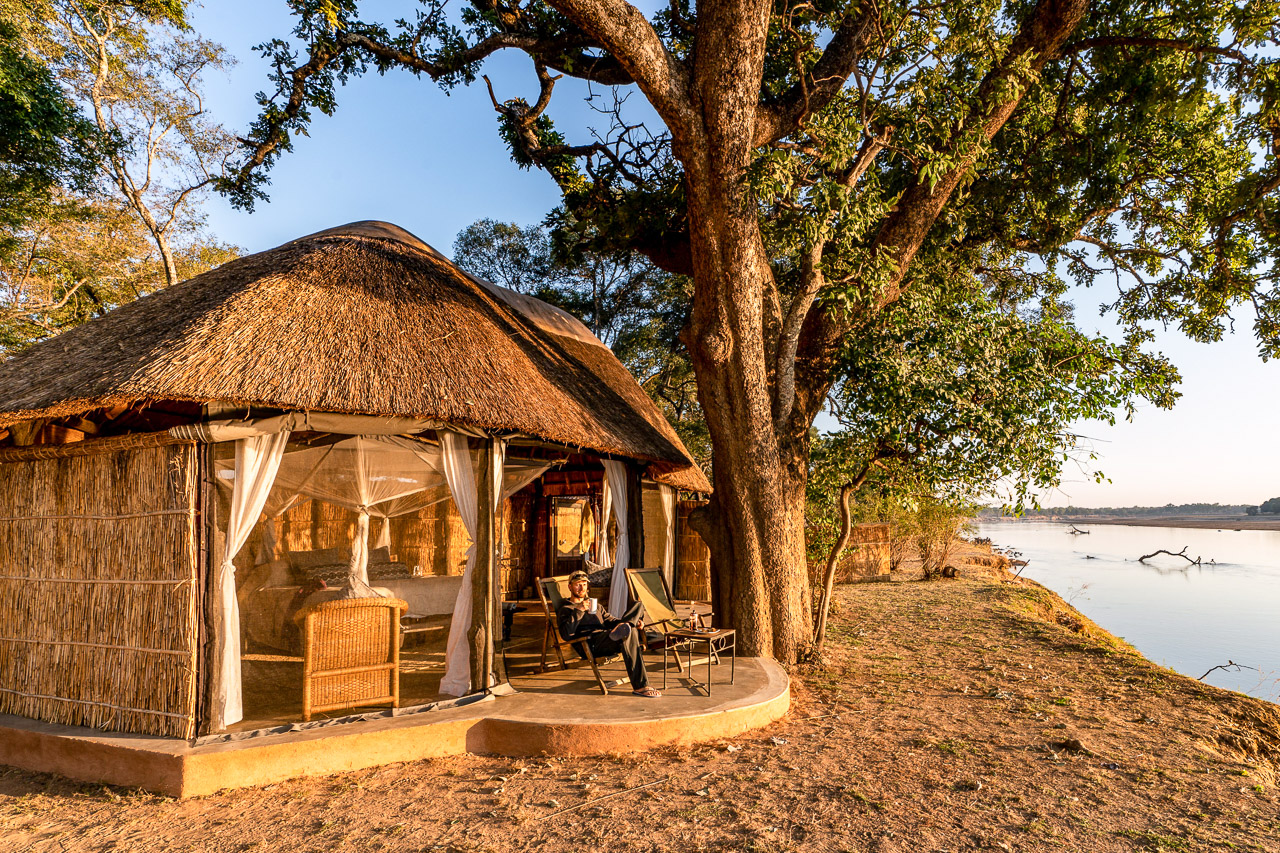

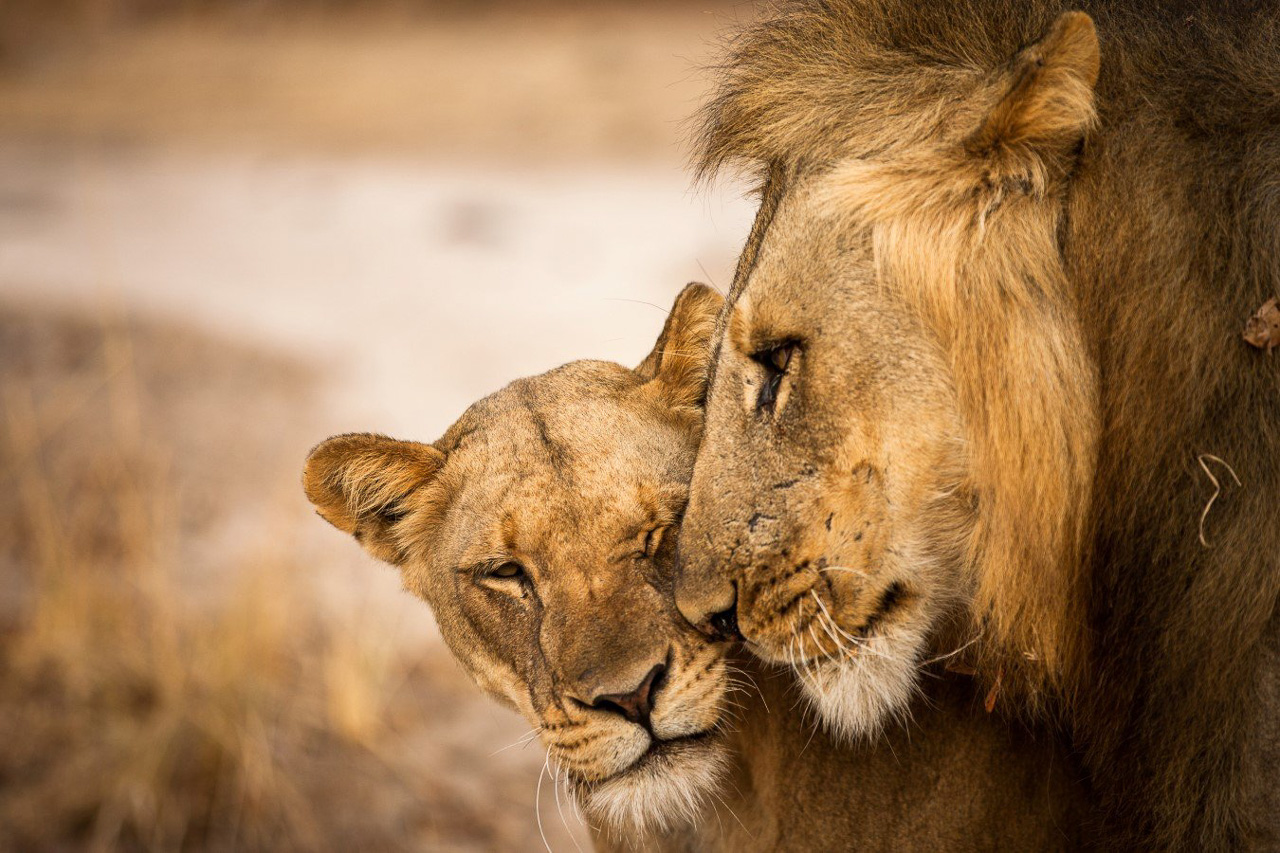
Accommodation
Mchenja Bush Camp is Norman Carr Safaris’ (current time + tide) most luxurious bush camp. „Mchenja" means ebony in the local language, matching the beautiful ebony forest which surrounds the camp.
Five wonderfully spacious, semicircular tents with characteristic thatched roofs and en-suite open-air bathrooms sit slightly elevated upon a rock floor. A canopy provides a sense of security, while the freestanding bathtub adds a touch of luxury – perfect after a multi-day walking safari. A wooden veranda allows guests to sit and watch the baboons at play as impala and bushbuck graze right in front of the tent. One of the rooms is a two bedroom/two bathroom family suite which is the perfect retreat for friends and families traveling together.
The main building comprises a bar, lounge area, dining table and a cosy and beautiful sitting area around the fireplace, where the day begins with breakfast in the morning and ends with a drink in the evening. Meals are often served under the open sky on the riverbank. At the far end of the camp there is a well maintained pool just be ready to share with the thirsty elephants!
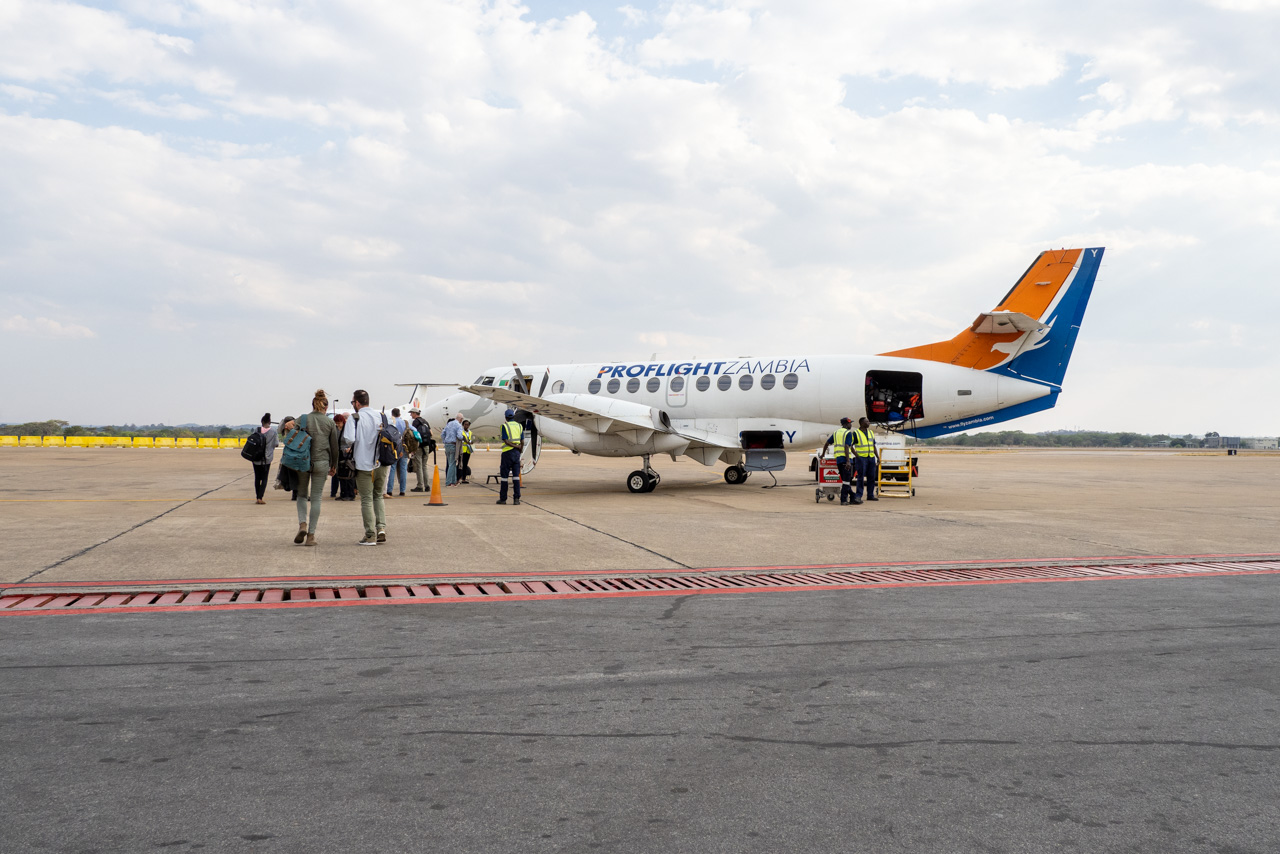
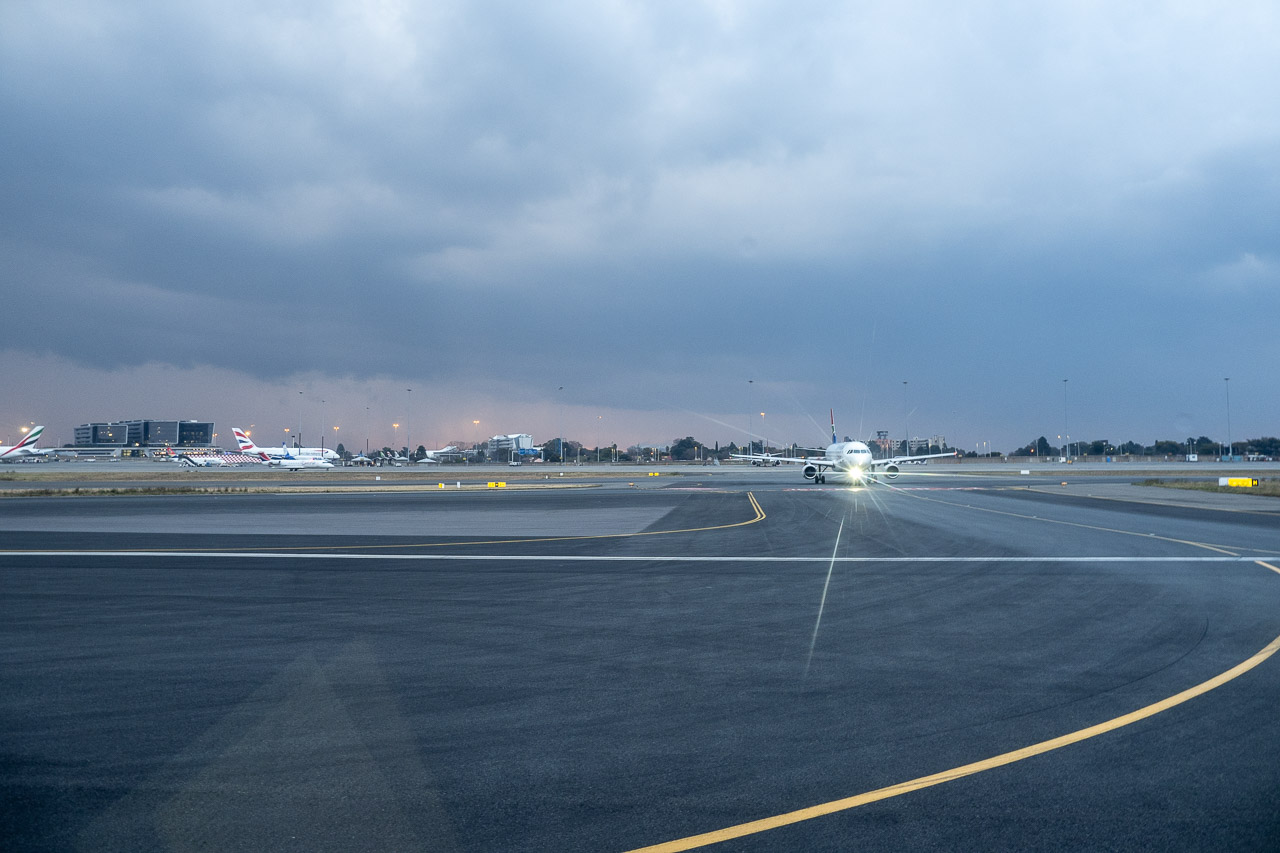
Basic Information
Individual journey. The journey will be planned on your preferred dates.
Duration 14 nights. Min 2 guests. Minimum age 12 years. Weight limit of luggage 20 kg. Luggage in one soft bag only.
Includes all transfers from Livingstone to the hotels/camps to Lusaka
- Toka Leya: Standard Room. All meals, drinks (except premier brands), twice daily scheduled activities with one of the guides. Activities: river cruise, game drive to Mosi-oa-Tunya National Park where rhinos can be found, visit to the Victoria Falls on the Zambian side, visit of a local village.
- Shumba Camp: Standard Room. All meals, drinks (except premier brands), laundry service, twice daily shared activities with one of the camp guides.
- Chiawa Camp: Standard Room. All meals, drinks (except premier brands), laundry service, twice daily shared activities with one of the camp guides.
- Chinzombo Camp: Standard Room. All meals, drinks (except premier brands), laundry service, twice daily shared activities with one of the camp guides.
- Mchenja Bush Camp: Standard Room. All meals, drinks (except premier brands), laundry service, twice daily shared activities with one of the camp guides.
Learn more about these areas











